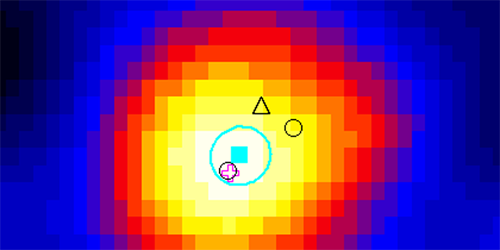Pulsar Halo Hints at Slow Diffusion of Cosmic Rays
Our Galaxy is a turbulent place for cosmic rays. Rather than zipping directly from their origin to wherever they finally deposit their energy, these charged particles—a mix of atomic nuclei, electrons, and positrons—are buffeted by interstellar magnetic fields. The effect of this turbulence on the cosmic-ray diffusion rate has previously been estimated by analyzing the gamma-ray “halos” detected around two pulsars. Now, the Large High Altitude Air Shower Observatory (LHAASO) in China has spotted such a halo around a third pulsar [1]. An analysis of this halo’s properties suggests that cosmic rays propagate particularly slowly near these stellar remnants.
LHAASO made the observations over about ten months in 2019 and 2020. When they analyzed the data, the LHAASO researchers found a fuzzy source of very-high-energy gamma rays in a part of the sky that coincides with a previously detected pulsar. Similar features observed around the pulsars “Geminga” and “Monogem” had been attributed to interactions between ambient interstellar photons and the very-high-energy electrons and positrons emitted by the pulsar. These interactions occur in a diffuse sphere around the pulsar and result in the photons having their energy boosted to the tens-of-TeV range. It is these boosted photons that form the gamma-ray halo that LHAASO detected.
If this model is correct, the size of the new halo, the energy of the gamma rays, and the estimated age of this pulsar indicate that the diffusion rate for cosmic rays is hundreds or thousands of times smaller in the vicinity of the pulsar than it is in the rest of the Milky Way. The reason for this difference remains unknown, but, the collaboration says, it might be caused by the complex magnetic environments around pulsars.
–Marric Stephens
Marric Stephens is a Corresponding Editor for Physics Magazine based in Bristol, UK.
References
- F. Aharonian et al., “Extended very-high-energy gamma-ray emission surrounding PSR J0622+3749 observed by LHAASO-KM2A,” Phys. Rev. Lett. 126, 241103 (2021).




